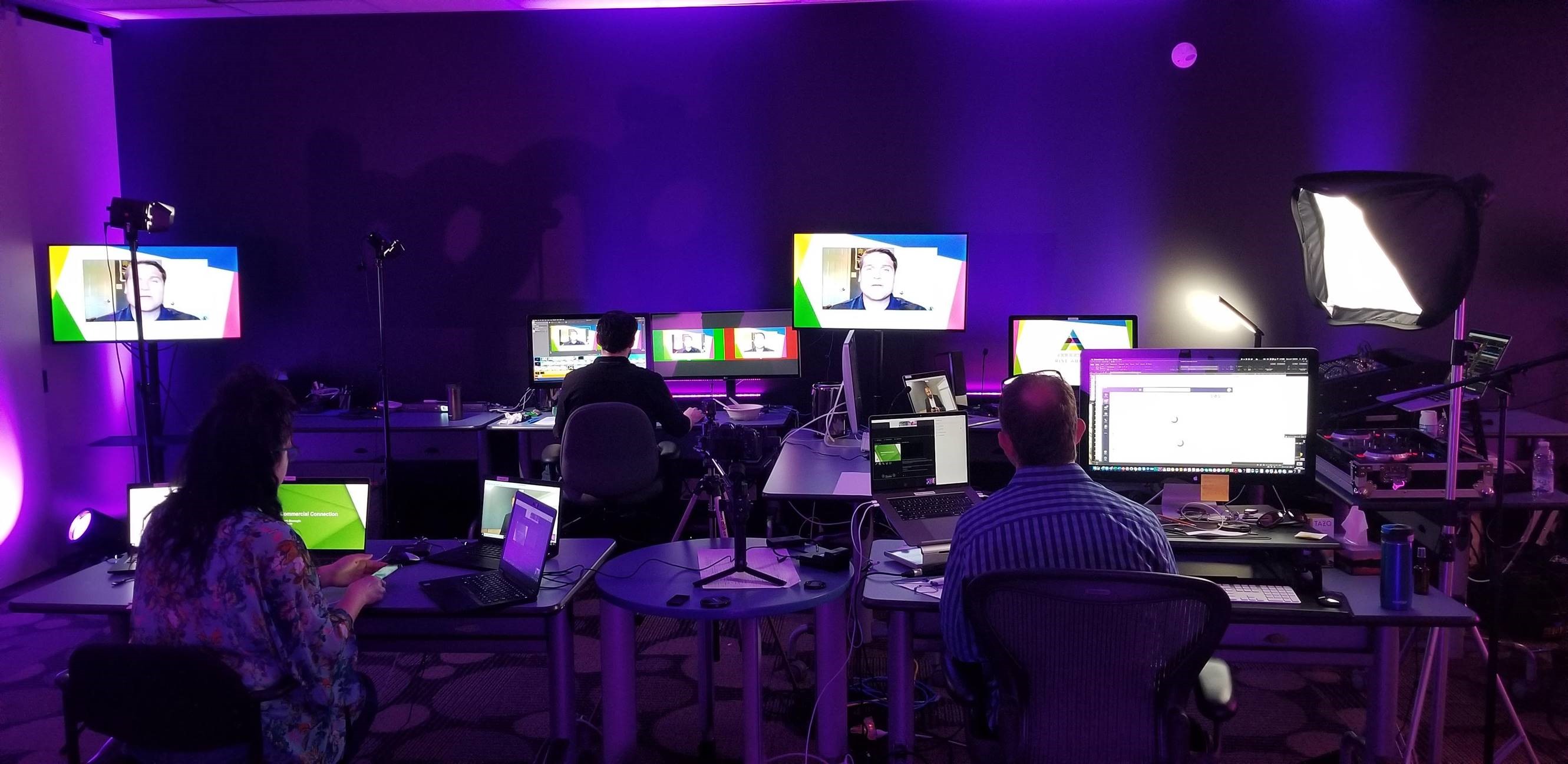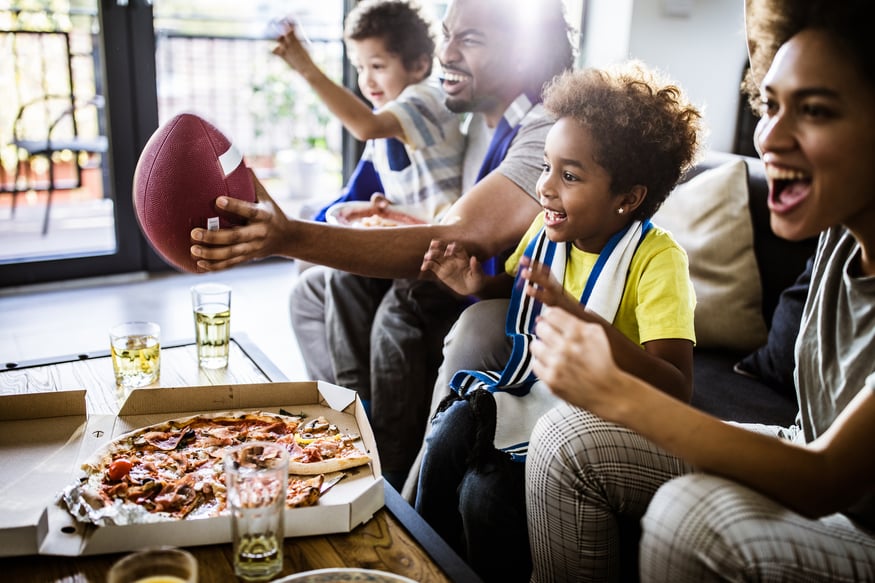Kay Van Slooten
The Future of Events is Here…And There.
There is no easy way to predict what’s next in this pseudo post-pandemic world but, when it comes to events, the future is already here…and there.
We’re not being cryptic. We’re talking about hybrid events that offer a blend of in-person and virtual audience engagement.
We’ve been working with this event format for many years, but it’s now undergoing a renaissance, powered by new technologies and approaches designed to engage audiences whose worlds’ have been turned upside down.
If you’re thinking, “Yeah, but I’ve never experienced a hybrid event,” think again.
Live Aid, Bob Geldof’s 1985 famine relief concert, with musical performances in London, England and Philadelphia streamed to audiences around the world, was a hybrid event. And quite a complicated hybrid event for Phil Collins who flew to the US on the Concorde to perform there after finishing his London set.
The good news is that hybrid events have come a long way since the days of Wembley Stadium, Bono’s mullet, and vacuum tube TVs.
Want to learn more about how Bond can help design and produce your event? Click here.
Like many companies around the world, Bond’s employees started working from home on Friday, March 13 because of the pandemic. In this time of great upheaval to business-as-usual, hundreds of in-person events have been postponed or adapted to a virtual setting. In the first 100 days of lockdown, we expanded to seven production studio spaces at our head office and designed and produced 27 virtual events for clients.
As an organization with digital architects and developers, experience designers, content writers, dozens of creatives, and an in-house video team, we have been able to create the energy of an in-person event in a virtual format—allowing our clients to engage the audiences that matter most, at a time that matters most.
With the easing of restrictions that make it possible for people to assemble safely in regional locations and smaller groups, hybrid events will become a preferred event format for companies who are keen to connect with their audiences in a more meaningful and productive way. According to a recent industry study, 68% of event marketers agree that hybrid events will play a key role in 2020 and 2021.

Today, state-of-the-art broadcast and production capabilities, along with the ubiquity of handheld mobile devices, allow us to take the core principle of hybrid events—in-person presenters and audiences connecting with remote participants wherever they are—to the next level.
Here are some things to keep in mind when planning your hybrid event:
Creating an Equal Experience
Whether audiences join in person or opt to participate virtually, the experience should be as consistent as possible. Joining an event virtually that is catered primarily to the in-person audience creates a significant gap in the impact on the virtual attendees. Finding ways to normalize the experience by sending event-branded packages to the remote participants, incorporating remote presenters, and finding opportunities to break down the virtual wall with interactive experiences will help you achieve your goals.
Professional sports have been perfecting this for decades. The NBA, NHL, NFL, MLB, and others create distinct experiences for in-stadium audiences that are uniquely different from the design for broadcast audiences. Event planners need to leverage this same thinking when creating effective hybrid events.

Production Value
How big you go is only limited by your imagination and budget! Virtual, mixed, or augmented-reality technologies are being used to elevate both in-person and remote viewing experiences with high-tech, broadcast quality results that put the garden-variety Zoom meeting to shame.
However, you don’t need Hollywood-sized budgets to create memorable experiences. There are many modest and cost-effective production approaches that still provide your audience with an enriched, more deeply connected event experience. Experiences are memorable and meaningful when they create positive emotion. Good design can do this without necessarily needing expensive production.
Take a look at this demo video showing how a virtual awards show can benefit from an elevated production level:
Broadcast Studios
For presenters or audience members, you’ll need a place to assemble your people. The obvious place to start is a broadcast studio facility. Located in larger cities around the world, these dedicated spaces feature large-scale sets, state-of-the-art technology, multidisciplinary teams, and amenities that make high-end hybrid event production seamless and safe for presenters and audiences.
Smaller-scale, more mobile-style setups can also be built in venues, corporate offices, or homes. We know—we’ve done it!
Temporary spaces can also be created. Just like a traditional in-person event, hotel ballrooms, head-office facilities, and other unique venues can be transformed to include staging and A/V for presenters and safe, socially distanced configurations for in-person audiences.
National and global events can utilize remote viewing parties to provide a safe and impactful way to gather audiences which mixes the benefits of in-person engagement with the possibilities and efficiencies of the virtual world.

Human-Centered Design
Now, more than ever, we need to think of our audience. They’ve been through a lot over the past few months and their needs and expectations are much different now. The attention span of your at-home audience continues to be fractured and fragile as they balance personal and professional obligations. The same is true for your in-person audience. Travel to and from the venue and safety while on site need to be considered and designed into the overall experience.
Using human-centered design principles enables event designers to see the world through your attendees’ eyes and to create an experience that is respectful of their time, energy, and safety as you engage them on business-critical content.
Transform the Experience into a Journey
Don’t just think of your hybrid experience as a day-long or week-long moment in time. Instead, think about how you can use the time leading up to event to build your audience’s awareness and interest. Similarly, how can you use the time following the event to maintain audience engagement? Just as you would do with a fully in-person or fully virtual experience, this is your chance to get creative with digital event apps or other mobile technologies that support social sharing, gamification, polling, audience participation, and micro-learning.
Safety First
The top priority for a hybrid event during the COVID-19 era must be safety, followed by significant measures to ensure comfort and trust that the precautions will protect those joining in person. But this doesn’t mean you need to negatively impact the experience. Find ways to build these precautions into positive and creative experiences for the audience.
If traveling, be sure to understand quarantine requirements. Will you have to self-isolate for 14 days upon arrival? Venues and governments will have their own procedures to follow, including mask wearing, temperature checks, health questionnaires, and social distancing. While none of this is necessarily new, it’s important to consider how these extra steps will impact the flow of a large group of people arriving at a venue prior to an event.
The busy fall and winter event seasons are just around the corner and many companies are starting to make plans to move ahead and adapt their traditional in-person events. As they do this, more and more are considering the possibilities offered by hybrid. In fact, many have already booked dates with venues and are short-listing the presenters who will appear in person. Others are making plans to set up temporary studios at their office facilities where they can connect and exchange in real time with their at-home audience. Some companies are planning on assembling in-person audiences in regional hubs to offer that all important in-person connection to their audiences.
The future is hybrid. It’s here. And it’s there.
